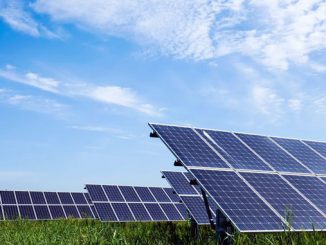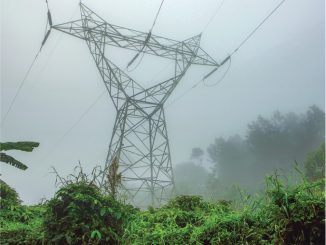
Among solar power plant components, while modules may receive the most attention, it is the module mounting structures that form the backbone of solar projects. Solar panels require mounting structures to be attached to the ground or rooftops and aligned at right angles to receive maximum sunlight. In addition, mounting structures protect solar panels from natural forces such as strong winds or flooding.
India’s solar power market is expanding at a rapid scale and so is the demand for equipment such as mounting structures. This trend is expected to continue in line with the country’s target to add more than 200 GW of solar capacity by the end of 2030. With such massive capacity additions expected over the next few years, it is vital to continuously upgrade mounting structures to improve performance in terms of both cost and product quality. Estimates suggest that solar mounting structures can account for 7-10 per cent of the total project cost of solar power plants. While this share is significant, it can further increase if poor quality or inadequately designed mounting structures are chosen, as it can lead to output losses and high maintenance costs.
Design and materials
Solar modules can be installed on the ground, rooftops, floating platforms in water, poles, carports and even canal tops, and mounting structures are designed differently for each of these cases. For instance, for roof-mounted racking systems, metal clips (flush mounts) or weights (ballasted mounts) are used to secure modules. There are pros and cons associated with both of these arrangements. Flush mounts have lower costs but can lead to leakages in roofs, while ballasted mounts can increase the weight of roofs. For floating solar systems or canal top systems, extra care needs to be taken to address corrosion on mounting structures caused by moisture. Meanwhile, for ground-mounted systems, mounting structure designs need to account for soil conditions and topography.
To ensure robust and high quality module mounting structures that can last for the entire project lifespan, it is critical to choose the right materials. The choice of material often depends not just on the location or type of solar project but also on the climate. While mounting structures have been traditionally made with steel, iron and aluminium, the use of zinc coating has now become common to prevent rusting and corrosion. In India, galvanised steel, made by coating steel with molten zinc, is now widely used for manufacturing solar mounting structures. Some major market players in the Indian mounting structure space are JSW Steel Limited, Pennar Industries Limited, Ganges Internationale Private Limited, Nuevosol Private Limited, Loom Solar, Metalkraft, Jakson, Strolar Mounting Systems Private Limited, SunShell Power, SNS Corporation, Aerocompact and Tata International.
Recent technology advancements
There have been various innovations in the module mounting structure space to improve system performance and reduce costs. Thus, mounting structure manufacturers are now focusing on lightweight materials to optimise costs. Meanwhile, various materials and their combinations are also undergoing trials and testing to achieve a balance between cost-effectiveness and high quality. For instance, Spanish start-up Landatu Solar announced a new mounting structure called Landblock for rooftops and flat surfaces last year. The structure features a two piece high-density polyethylene ballast system, a fillable base, and a cover. This base can be filled with water, gravel or even sand to provide sturdiness to the system. While the unfilled base weighs less than 3 kg, it has a volume of 56 litres and can reach up to 100 kg when filled. Landblock, measuring 465 mmx1,235 mmx480 mm, is designed to withstand wind speeds of up to 162 km per hour. The innovative product offers various benefits for installers. First, it is much lighter than concrete ballast mounting systems and is easier to handle. It can be easily transported to the desired location and then quickly filled with water, sand or gravel to complete installation. Secondly, perforation of a rooftop is not required, and the modules can be directly fixed on the mounting structures using plugs and screws. Further, these mounting structures are easier to transport as they can be stacked on top of each other, allowing for space optimisation.
Efficient manufacturing processes are being developed to prevent wastage and reduce production costs. Standard standardised designs are also being formulated. Adjustable angles are gaining traction to improve overall generation from solar projects. In addition, new products are being designed to facilitate easier handling and installations on-site, requiring less manpower and effort. For instance, Mibet Energy has introduced a new solar mounting structure that is specifically designed for solar projects on balconies. The system is pre-bolted and fixed, and therefore does not require welding and drilling during installation. Further, the product does not require additional space or changes to the building’s structure and can be instantly installed on a wall or balcony with just one or two people needed for the entire process. The mounting structure is suitable for different types of balconies and can be mounted on concrete garage rooftops, flat rooftops with cement ballast, or balcony or terrace walls using expansion bolts.
The recycling and reusing of materials are steadily gaining traction, as this not only helps manufacturers reduce production costs but also provides conscious buyers with sustainable materials for their solar projects. For instance, a Swiss start-up called Turn2Sun Renewables has developed a mounting structure made of wind turbine blades. This “Blade2Sun” solution uses blades from end-of-life wind turbines to support a metal structure that mounts solar modules, eliminating the need for metallic beam-based mounting structures. The major benefit of this arrangement is that these end-of-life wind turbine blades have virtually zero cost, and thus, the product is highly cost-competitive when compared to other similar systems. Further, since the product recycles metals from wind turbine blades, it reduces the utilisation of new metals for the production of mounting structures.
Further, digital solutions are also being explored in the mounting structure space, though this is still at a nascent stage. The integration of digital technologies can help in quality control and operations and maintenance, as well as in the initial design and layout. For instance, Aerocompact’s module mounting structures are equipped with their proprietary AEROTOOL design software. The recent addition to its COMPACTMETAL TS series, the TSE15 product, has a height of 80 mm, allowing for adequate roof clearances and rear ventilation. Further, the raised short rail requires minimal additional assembly effort, and AEROTOOL assists in project planning by providing recommendations for the appropriate bit extension.
Future outlook
The mounting structure space is expected to continue growing over the next few years with improvements in materials, design, technology and the evolving needs of buyers. As consumers focus on reducing implementation timelines and labour costs, there will be a greater emphasis on lightweight products that are prefabricated and require minimal civil work. Further, the Indian market presents immense opportunities for mounting structure manufacturers as they can cater to clients seeking products suitable for various climatic and geographic conditions.
Nevertheless, concerns will arise regarding supply chains and the cost volatility of raw materials. For instance, successive waves of the Covid-19 pandemic and the Russia-Ukraine crisis caused upheavals in the commodity markets, and this, combined with a volatile currency and increased transport costs, resulted in serious repercussions for the metal and minerals industry. Solar equipment prices witnessed a hike leading to an increase in project costs for both installers and developers.
Thus, going forward, mounting structure players must focus on constant technology upgrades combined with the diversification of supply chains to ensure secure operations.



